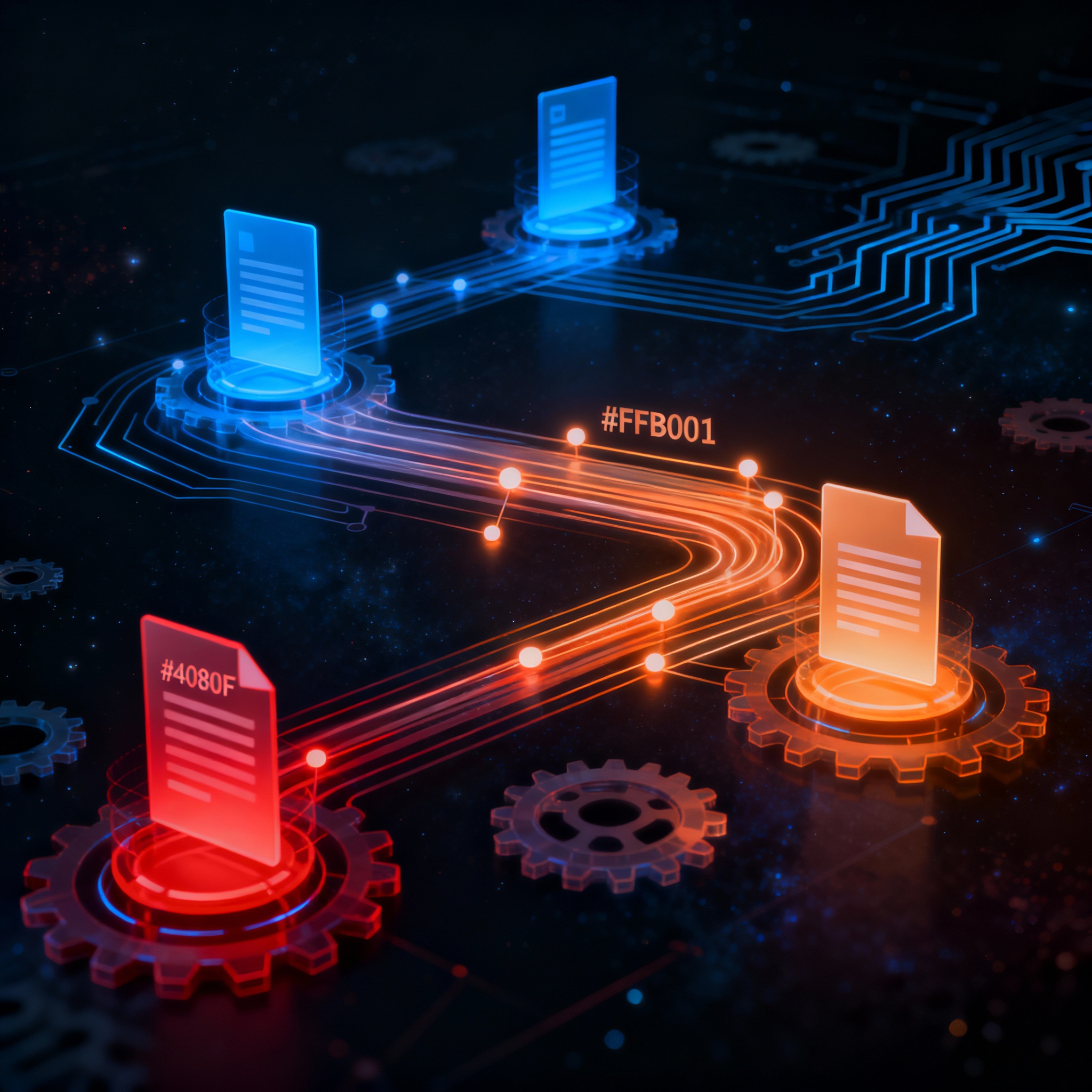
Streamlining Factory Floors: How Retrieval-Augmented Generation Elevates Quality Control Documentation in Manufacturing
Streamlining Factory Floors: How Retrieval-Augmented Generation Elevates Quality Control Documentation in Manufacturing
In the heart of modern manufacturing, where precision meets production lines, quality control documentation serves as the backbone of operations. From ensuring compliance with industry standards to tracking defects and maintaining audit trails, these documents are essential for avoiding costly recalls and upholding product integrity. But as factories generate mountains of data—from inspection reports to supplier certifications—managing this information manually becomes a bottleneck. Enter Retrieval-Augmented Generation (RAG), an AI technique that pairs information retrieval with generative models to deliver accurate, context-aware responses. In this post, we'll explore how RAG can transform quality control documentation in manufacturing, drawing on recent research and practical insights to help you implement it effectively.
Whether you're a plant manager optimizing workflows or a developer building AI tools, understanding RAG's potential in this domain can lead to smarter, more efficient systems. Platforms like ChatRAG, a Next.js boilerplate designed for launching chatbot-agent SaaS businesses, make it easier to deploy such solutions by providing a robust foundation for integrating RAG into custom applications.
Understanding RAG: The Basics and Beyond
Retrieval-Augmented Generation isn't just another buzzword in the AI lexicon; it's a practical framework that enhances large language models (LLMs) by grounding their outputs in real, retrieved data. At its core, RAG works by first retrieving relevant information from a knowledge base—such as a vector database of documents—and then using that context to generate informed responses. This hybrid approach mitigates common LLM pitfalls like hallucinations, where models invent facts, by ensuring outputs are backed by verifiable sources.
In manufacturing quality control, RAG shines by handling unstructured data like PDFs of inspection logs or handwritten notes digitized into text. For instance, imagine querying a system about a specific batch's defect rates: RAG would pull exact figures from historical records and generate a summary, complete with citations. This isn't theoretical; according to a comprehensive survey on RAG architectures, enhancements like multi-hop retrieval and graph-based methods are pushing the boundaries of what's possible, making RAG more robust for complex industrial applications.
But why focus on manufacturing? The sector deals with high-stakes documentation where errors can lead to safety issues or regulatory fines. Traditional methods rely on manual searches through file cabinets or basic keyword tools, which are time-consuming and prone to oversight. RAG automates this, turning static documents into dynamic knowledge sources.
The Case for RAG in Manufacturing Quality Control
Manufacturing quality control documentation encompasses everything from ISO 9001 compliance records to real-time sensor data logs. With Industry 4.0 pushing for smarter factories, integrating AI like RAG can address key pain points: data silos, inconsistent reporting, and slow incident resolution.
Consider a scenario where a quality engineer needs to investigate a recurring defect in automotive parts. Without RAG, they'd sift through emails, spreadsheets, and reports manually. With RAG, an AI agent could retrieve relevant documents—say, from a database of past audits—and generate a synthesized report highlighting patterns, potential causes, and recommended fixes. This aligns with findings in agentic troubleshooting guide automation for incident management, where similar systems have automated diagnostics in tech environments, a concept easily adaptable to manufacturing.
Moreover, RAG supports predictive maintenance by analyzing quality docs alongside operational data. For example, in laser-directed energy deposition (L-DED) processes, DT and LLM-driven intelligent maintenance systems demonstrate how LLMs can diagnose faults, reducing downtime. Applying RAG here ensures that generated insights are pulled from verified quality control records, enhancing trustworthiness.
From a compliance standpoint, RAG helps generate audit-ready reports on demand. By retrieving standards from regulatory documents and augmenting them with factory-specific data, it ensures outputs are accurate and traceable—crucial in sectors like pharmaceuticals or aerospace.
Implementing RAG for Quality Control Documentation: A Step-by-Step Guide
Ready to bring RAG into your manufacturing setup? Here's a practical roadmap, complete with actionable steps.
Step 1: Build Your Knowledge Base
Start by curating a centralized repository of quality control documents. Use tools like vector databases (e.g., Pinecone or FAISS) to index PDFs, images, and text files. For manufacturing, include metadata like timestamps, machine IDs, and defect codes to enable precise retrieval.
Incorporate semantic search to go beyond keywords. A semantic approach to detecting quality issues in Manufacturing 4.0 highlights how ontology-based methods can identify anomalies in data, which pairs well with RAG for more intelligent querying.
Step 2: Choose and Fine-Tune Your LLM
Select an LLM like GPT-4 or Llama 2, then integrate retrieval mechanisms. Frameworks such as LangChain or Haystack simplify this. For quality control, fine-tune on domain-specific data to recognize manufacturing jargon—terms like "Six Sigma" or "root cause analysis."
To boost performance, explore advanced techniques. Advanced RAG techniques for high-performance LLM applications discuss using knowledge graphs to connect related documents, ideal for tracing quality issues across supply chains.
Step 3: Integrate Retrieval and Generation
Set up the RAG pipeline: A user's query triggers a search for relevant chunks, which are then fed into the LLM for generation. In a quality control context, this could mean asking, "What were the quality metrics for production line 3 last quarter?" The system retrieves data and generates a visualized report.
For those building custom solutions, ChatRAG's boilerplate accelerates development by handling frontend integrations, allowing you to focus on RAG logic rather than boilerplate code.
Step 4: Ensure Trustworthiness and Evaluation
Trust is paramount in manufacturing. Implement evaluation frameworks to measure RAG's accuracy. Making RAG trustworthy in production offers strategies like confidence scoring and human-in-the-loop validation, ensuring outputs are reliable for critical decisions.
Additionally, driving trust in RAG without retraining the model shows how pattern analysis can improve system reliability, a boon for quality control where precision is non-negotiable.
Practical Example: RAG in Polymer Processing
Take polymer manufacturing, where quality control involves monitoring processing parameters to avoid defects. An intelligent information extraction pipeline driven by large language models illustrates how LLMs can build databases from docs, which RAG can then query for insights like optimal temperature settings based on historical quality reports.
In practice, a RAG-powered chatbot could assist operators by retrieving safety protocols during a quality check, generating step-by-step guidance augmented with real-time data.
Overcoming Challenges in RAG Adoption
While promising, RAG isn't without hurdles. Data privacy is a big one—manufacturing docs often contain sensitive IP. Mitigate this with on-premises deployments or encrypted retrieval.
Scalability is another: As document volumes grow, retrieval speed can lag. Optimize with hybrid search (keyword + semantic) and chunking strategies.
Finally, integration with legacy systems requires careful planning. Start small—pilot RAG on one production line's documentation before scaling.
Key Takeaways and Looking Ahead
Retrieval-Augmented Generation is poised to redefine quality control documentation in manufacturing, offering a path to faster, more accurate insights amid growing data complexity. By implementing RAG, factories can reduce errors, enhance compliance, and empower teams with actionable intelligence.
Key takeaways:
- Grounded Accuracy: RAG ensures responses are based on real data, minimizing risks in high-stakes environments.
- Efficiency Gains: Automate document handling to free up human resources for strategic tasks.
- Scalable Solutions: Leverage tools like ChatRAG to build tailored AI agents that integrate seamlessly into operations.
- Future-Proofing: Stay ahead by adopting advanced techniques from ongoing research, adapting to evolving manufacturing needs.
As AI continues to evolve, embracing RAG could be the key to maintaining a competitive edge in quality-driven manufacturing. Whether you're exploring initial setups or refining existing systems, the potential for innovation is immense.
Ready to build your AI chatbot SaaS?
ChatRAG provides the complete Next.js boilerplate to launch your chatbot-agent business in hours, not months.
Get ChatRAGRelated Articles

Mastering Internal Knowledge: How RAG Powers Enterprise Documentation Search
In today's data-driven enterprises, sifting through vast internal documentation can be a major bottleneck. Retrieval-Augmented Generation (RAG) emerges as a game-changer, combining AI retrieval with generation to deliver accurate, relevant responses. This guide dives into implementing RAG for efficient knowledge management.

Streamlining Scholarly Scrutiny: RAG's Impact on Manuscript Review in Publishing
In the fast-paced world of academic publishing, reviewing manuscripts can be a daunting task fraught with information overload. Retrieval-Augmented Generation (RAG) emerges as a game-changer, combining AI's generative power with targeted data retrieval to enhance accuracy and efficiency. This post delves into how RAG streamlines the review process, from literature verification to constructive feedback.

Streamlining Patient Records: The Power of RAG in Modern Healthcare Management
In the fast-paced world of healthcare, managing patient records efficiently is crucial for quality care. Retrieval-Augmented Generation (RAG) combines large language models with real-time data retrieval to provide contextually accurate information. This post delves into how RAG can transform record management, backed by recent research and practical examples.